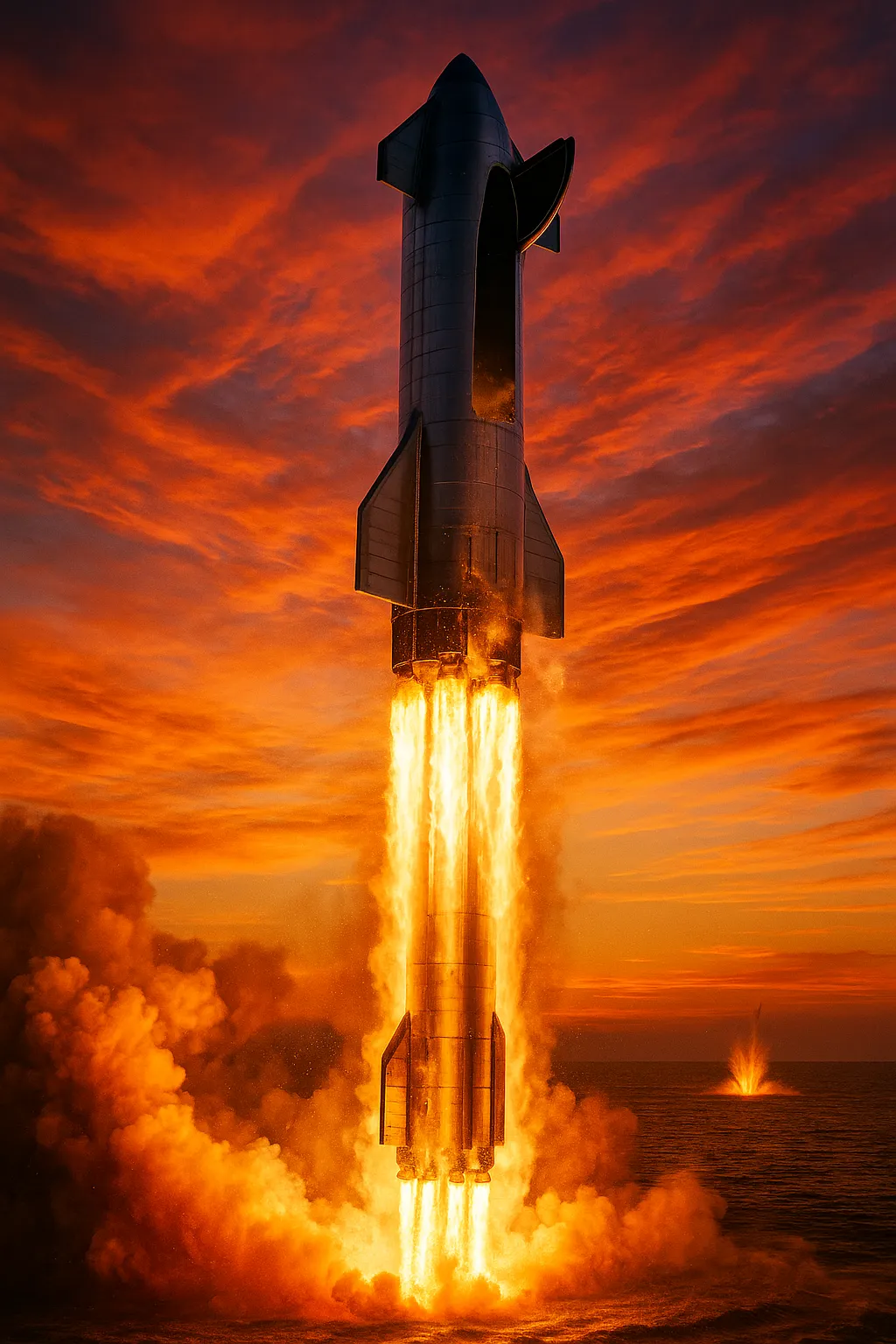SpaceX’s Starship Flight 10 Achieves Milestone Success

SpaceX’s tenth integrated flight test of its Starship rocket achieved full mission success on Tuesday evening, marking a critical turnaround after three consecutive failures earlier this year.
At 6:30 p.m. Central Time on August 26, Starship lifted off from the Starbase launch site in Boca Chica, Texas, on its suborbital Integrated Flight Test-10 (IFT-10). After a flawless ascent, the Super Heavy booster and Starship upper stage executed all planned maneuvers with precision.
The Super Heavy booster completed a controlled boost-back and splashdown in the Gulf of Mexico, while the Starship upper stage deployed eight simulated Starlink V3 satellites-a first for the program-and relit one of its Raptor engines in space. After coasting for an hour and six minutes, Starship reentered and conducted a soft splashdown in the Indian Ocean, three-quarters of the way around the globe from Texas.
This successful flight reverses a series of Rapid Unscheduled Disassemblies (RUDs) witnessed in January, March, and May, as well as a static-fire anomaly in June. Today’s mission validated several key technologies:
- First demonstration of payload deployment through Starship’s bay door
- In-space Raptor engine restart
- Controlled water landings for both booster and ship
Elon Musk hailed the achievement via X, “Congratulations to the entire SpaceX team on an exciting tenth flight test of Starship!” SpaceX now turns its focus to refining recovery techniques, including eventual booster catch by the launch tower and full reusability of both stages as it advances toward orbital missions and deep-space crewed flights.
Categories
Autos and vehicles Beauty and fashion Business and finance Climate Entertainment Food and drink Games Health Hobbies and leisure Jobs and education Law and government Other Politics Science Shopping Sports Technology Travel and transportationRecent Posts
Tags
Archives
08/19/2025 (3) 08/20/2025 (40) 08/21/2025 (27) 08/22/2025 (22) 08/23/2025 (4) 08/24/2025 (21) 08/25/2025 (30) 08/26/2025 (24) 08/27/2025 (29) 08/28/2025 (16) 08/29/2025 (9) 08/30/2025 (13) 08/31/2025 (17) 09/01/2025 (167) 09/02/2025 (124) 09/03/2025 (149) 09/04/2025 (112) 09/05/2025 (72) 09/06/2025 (169) 09/07/2025 (162) 09/08/2025 (150) 09/09/2025 (176) 09/10/2025 (194) 09/11/2025 (194) 09/12/2025 (186) 09/13/2025 (207) 09/14/2025 (159) 09/15/2025 (175) 09/16/2025 (198) 09/17/2025 (196) 09/18/2025 (196) 09/19/2025 (207) 09/20/2025 (129) 09/21/2025 (4)